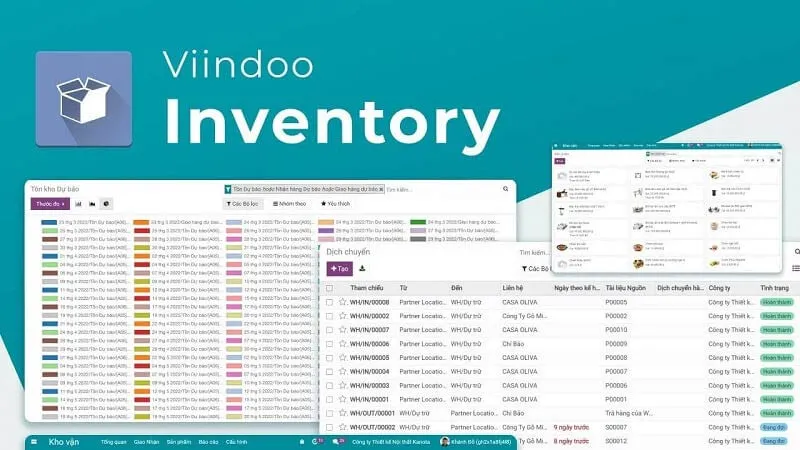If you're wondering how to generate SKU codes when managing inventory, this article from Viindoo walks you through the process step-by-step. Next, we invite you to dive deeper into learning more about how to create and manage SKUs effectively. Follow now!
>>>> See More: Import and export management application
What is a SKU number?
SKU code stands for "Stock Keeping Unit". This is a unique identifier used in inventory management to identify and track individual products or different types of goods.
SKU codes can include information such as product type, size, color, style, and any other attributes needed to differentiate the product. Using SKU codes helps organize and manage inventory more effectively, making it easier to search, check inventory, and manage different products.

A SKU code is a unique string of characters used to identify and track products in retail and inventory management.
>>>> Don't Skip: What is SKU management ? Top 4 best SKU management methods
Tired of SKU creation and tracking? Automate it now!
- Effortlessly handle bulks of SKUs and goods
- Ensure accuracy and reduce errors
- Real-time updates on SKU availability, enabling efficient order fulfillment.

2. Instructions for creating the simplest SKU code
Step 1: Determine the SKU number format
First, choose the SKU number format that suits your business plans and needs. Consider what information to contain, such as product attributes (size, color, material), or any other relevant identifiers. Normally, warehouse management units will create SKU codes in different formats such as:
- Sequential numbers (e.g. 0001, 0002)
- Date-based numbers (e.g. YYMMDD)
- Hierarchical number (e.g. category-subcategory number)
Choose a format that is easy to understand, consistent, and flexible for future business growth.
Step 2: Select information for SKU number
Based on the format, choose what information to include in the SKU number. For example: With clothing, size and color can be added; with electronics, this may include brand, model, and specifications. Information elements typically include:
- Product type
- Brand
- Size
- Color
- Material
- Style
- Seasonality
Choose relevant and meaningful information to help businesses easily find and classify products when needed.

Information To Include In Your SKU Numbers
Step 3: Assign unique code to each product
Assign unique codes to each product based on the format and information selected. Ensure uniqueness and no overlap with current or future codes. Use serial numbers or a combination of numbers and letters to create uniqueness. Consider using a consistent pattern or logic to easily identify product attributes or categories from SKU numbers.
Tired of SKU creation and tracking? Automate it now!
- Effortlessly handle bulks of SKUs and goods
- Ensure accuracy and reduce errors
- Real-time updates on SKU availability, enabling efficient order fulfillment.

Step 4: Check the SKU number
After generating SKU codes, check for accuracy and efficiency. Ensure SKU numbers are unique and information is accurate. Test by applying to actual products and inventory management. This helps detect potential issues and make improvements before implementing the SKU system across the warehouse.
 Creating SKU codes is extremely simple and easy to understand for many people.
Creating SKU codes is extremely simple and easy to understand for many people. 4. Some notes when creating SKU codes
Here are some important points that businesses should know when creating SKU codes:
- Simplify design: Choose SKU numbers that are easy to remember, avoid codes that are too long or complicated to avoid confusion.
- Combine relevant information: Include details such as color, size, material to quickly classify products.
- Ensure uniqueness: Each SKU number must be unique, avoiding confusion and omissions in the warehouse.
- Consider scalability: Plan SKU numbering so that it can be expanded in the future for new products.
- Test and adjust: Test the SKU system before implementation, adjust based on results.
- Use technology: Adopt inventory management software or SKU creation tools to save time and avoid errors.

Create a SKU coding system that is consistent, easy to manage, and helps optimize your inventory management.
>>> See more: Top 5 SKU software to help optimize warehouse management activities
Hopefully the instructions from Viindoo will help your business better understand how to create SKU codes to easily track products and optimize your business operations.
Discover Viindoo Inventory Software
The All-in-one Inventory Software for SMEs. Automate your inventory process leading to increased efficiency, accuracy, and ultimately, cost savings.

